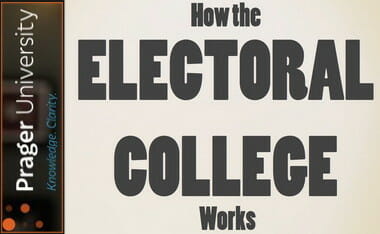- VIOLENT LEFTIST Who Abused Texas Teen in #MAGA Hat Identified AND FIRED BY EMPLOYER! (GATEWAY PUNDIT)
- …Kino Jimenez is member of the Green Party of Texas according to their website. The group’s ‘key values’ include; nonviolence, respect for diversity, and social justice. Or maybe not….? (SCALLYWAG AND VAGABOND)
Author: Papa Giorgio


A Socialist Mexico

DNC Chair Says Socialism Future of Democrat Party
This will ALL server to splinter the Democrats.
WESTERN JOURNALISM writes about the exchange:
…“What does this tell you about where the Democratic Party is going today?” Press said.
Perez responded by saying his daughters “were both texting me about their excitement over Alexandria, because she really, she represents the future of our party.”
The 28-year-old Ocasio-Cortez is a member of the Democratic Socialists of America, who want to abolish capitalism in favor of an economy run by the state or “the workers.”…
RUSH LIMBAUGH discusses what the turnout for this young socialist REALLY says:
CALLER: It’s just amazing that the Democratic Party is literally turning itself inside out now because of this one primary election. And I don’t know what the numbers were in terms of the turnout, but it can’t have been very large in an election where —
RUSH: It was a sizable — she beat this dinosaur by like 15 points, and the polls had him winning by 35. It was a shocker, there’s no question.
[….]
RUSH: The turnout in the election of Alexandria Ocasio-Cortez was under 20%. The caller was right. The turnout less than 20%. That was easy pickings for some dedicated Democrat socialist to take over some district. That’s easy.
[….]
RUSH: So, yeah, the turnout in that race won by Alexandria Ocasio-Cortez was under 20%. Folks, do you realize that if this clown, Crowley, had just got his base out, that this whole thing would not have happened? She wins this election with less than a 20% turnout. Our caller was right. The Democrats are going bonkers thinking this is the new wave in the Democrat Party.
And if Crowley, the incumbent, if your standard, ordinary, everyday Democrats, I know they’re a dwindling few, but if they had just shown up. But look at this. There’s another thing about this. We’re constantly told the Democrats have all the enthusiasm, right? The Democrats, they’re chomping at the bit! They can’t wait to get rid of Trump!
Now, I know Trump was not on this ballot. I know this was a primary. And I know it was just Ocasio-Cortez versus Crowley. But where was all this Democrat enthusiasm? I’ll guarantee you that Crowley’s voters thought he was a shoo-in because he’s the kind of Democrat that wins elections with nobody voting anyway. Just one of these guys for whom the seat has been eternal and expected.
But here comes this socialist-Marxist exciting a small percentage of that district and they’re the ones that showed up and turned out. But even if they get a hundred percent turnout of all the socialist-Marxists, that’s not gonna be enough to take back the House of Representatives. So they are, I think, what do you say, lying to themselves, fooling themselves. But it’s why the Democrats are concerned.
It’s not just that the Pelosi and the Schumer types would rather have their Marxism and socialism camouflaged. It’s not just that. It’s that they know that that wing of the Democrat Party in terms of raw numbers is really tiny. Not enough to win a national election, I mean, not even close. So you have a turnout of less than 20%, the seat turns, and now everybody’s talking about how this is a revolution in the Democrat Party? Give me a break. What it’s gonna end up doing is dividing and fracturing the Democrat Party.
POWERLINE adds to the fray!
…But most voters apparently aren’t convinced. Rasmussen Reports finds that given a choice between free enterprise and socialism, the overwhelming majority prefer freedom:
[V]oters reject socialism in no uncertain terms.
A new Rasmussen Reports national telephone and online survey finds that 74% of Likely U.S. Voters prefer a free market economic system over a socialist system. Only 13% think socialism is a better economic system, and just as many (13%) are undecided.
Of course, it is depressing to think that 13% of voters are dumb enough to want socialism, and being undecided between free markets and socialism is like being undecided between Bar Refaeli and Nancy Pelosi. But I suppose you could find 13% of poll respondents who will say the Sun rises in the West….

Millennials Are Suckers for #FakeNews
This old story reminds me of talking to millennial’s who listed to comedy shows as their source of political moral guidance on what is the case in our body politic. Here is the WASHINGTON TIMES noting the gullibility of these younger persons who really haven’t read much or watched much outside of what they had to for their bachelors in literature of psychology or business administration:
…Ben Rhodes, the man who majored in creative writing and then ended up the Deputy National Security Adviser for President Obama, told The New York Times about the “echo chamber” he was able to create and feed:
In the spring of last year, legions of arms-control experts began popping up at think tanks and on social media, and then became key sources for hundreds of often-clueless reporters. ‘We created an echo chamber,’ [Rhodes] admitted, when I asked him to explain the onslaught of freshly minted experts cheerleading for the deal. ‘They were saying things that validated what we had given them to say.’
“The average reporter we talk to is 27 years old, and their only reporting experience consists of being around political campaigns. … They literally know nothing,” Rhodes bragged.
And the know-nothing millennials loved him for it. And, apparently, they still do….

You Shouldn’t Bring A Stick To A Fist Fight
Antifa Soy Boy knocked out at Patriot Prayer rally in Portland. In this slow-mo you can see that the “prayer rallie guy” took some steam off his punch and disarmed the other guy as he was falling. Good stuff.
Fuller Video… these are our soccer hooligans!

Make America (#MA)

Three Courses On The Electoral College (Civics 101)
Do you understand what the Electoral College is? Or how it works? Or why America uses it to elect its presidents instead of just using a straight popular vote? Author, lawyer and Electoral College expert Tara Ross does, and she explains that to understand the Electoral College is to understand American democracy.
- James Madison (fourth President, co-author of the Federalist Papers and the “father” of the Constitution) – “Democracies have ever been spectacles of turbulence and contention; have ever been found incompatible with personal security, or the rights of property; and have, in general; been as short in their lives as they have been violent in their deaths.”
- John Adams (American political philosopher, first vice President and second President) – “Remember, democracy never lasts long. It soon wastes, exhausts, and murders itself. There never was a democracy yet that did not commit suicide.”
- Benjamin Rush (signer of the Declaration) – “A simple democracy… is one of the greatest of evils.”
- Fisher Ames (American political thinker and leader of the federalists [he entered Harvard at twelve and graduated by sixteen], author of the House language for the First Amendment) – “A democracy is a volcano which conceals the fiery materials of its own destruction. These will provide an eruption and carry desolation in their way.´ / “The known propensity of a democracy is to licentiousness [excessive license] which the ambitious call, and the ignorant believe to be liberty.”
- Governor Morris (signer and penman of the Constitution) – “We have seen the tumult of democracy terminate… as [it has] everywhere terminated, in despotism…. Democracy! Savage and wild. Thou who wouldst bring down the virtous and wise to thy level of folly and guilt.”
- John Quincy Adams (sixth President, son of John Adams [see above]) – “The experience of all former ages had shown that of all human governments, democracy was the most unstable, fluctuating and short-lived.”
- Noah Webster (American educator and journalist as well as publishing the first dictionary) – “In democracy… there are commonly tumults and disorders….. therefore a pure democracy is generally a very bad government. It is often the most tyrannical government on earth.”
- John Witherspoon (signer of the Declaration of Independence) – “Pure democracy cannot subsist long nor be carried far into the departments of state – it is very subject to caprice and the madness of popular rage.”
- Zephaniah Swift (author of America’s first legal text) – “It may generally be remarked that the more a government [or state] resembles a pure democracy the more they abound with disorder and confusion.”
Take note that as well ArticleIV, Section4 of the Constitution reads:
“The United States shall guarantee to every state in this union a republican form of government…“
Right now, there’s a well-organized, below-the-radar effort to render the Electoral College effectively useless. It’s called the National Popular Vote, and it would turn our presidential elections into a majority-rule affair. Would this be good or bad? Author, lawyer, and Electoral College expert Tara Ross explains.
You vote, but then what? Discover how your individual vote contributes to the popular vote and your state’s electoral vote in different ways–and see how votes are counted on both state and national levels.
Critics have long derided the Electoral College as a fusty relic of a bygone era, an unnecessary institution that one day might undermine democracy by electing a minority president. That day has arrived, assuming Gov. Bush wins the Florida recount as seems likely.
The fact that Bush is poised to become president without a plurality of the vote contravenes neither the letter nor the spirit of the Constitution. The wording of our basic law is clear: The winner in the Electoral College takes office as president. But what of the spirit of our institutions? Are we not a democracy that honors the will of the people? The very question indicates a misunderstanding of our Constitution.
James Madison’s famous Federalist No. 10 makes clear that the Founders fashioned a republic, not a pure democracy. To be sure, they knew that the consent of the governed was the ultimate basis of government, but the Founders denied that such consent could be reduced to simple majority or plurality rule. In fact, nothing could be more alien to the spirit of American constitutionalism than equating democracy will the direct, unrefined will of the people.
Recall the ways our constitution puts limits on any unchecked power, including the arbitrary will of the people. Power at the national level is divided among the three branches, each reflecting a different constituency. Power is divided yet again between the national government and the states. Madison noted that these two-fold divisions — the separation of powers and federalism — provided a “double security” for the rights of the people.
What about the democratic principle of one person, one vote? Isn’t that principle essential to our form of government? The Founders’ handiwork says otherwise. Neither the Senate, nor the Supreme Court, nor the president is elected on the basis of one person, one vote. That’s why a state like Montana, with 883,000 residents, gets the same number of Senators as California, with 33 million people. Consistency would require that if we abolish the Electoral College, we rid ourselves of the Senate as well. Are we ready to do that?
The filtering of the popular will through the Electoral College is an affirmation, rather than a betrayal, of the American republic. Doing away with the Electoral College would breach our fidelity to the spirit of the Constitution, a document expressly written to thwart the excesses of majoritarianism. Nonetheless, such fidelity will strike some as blind adherence to the past. For those skeptics, I would point out two other advantages the Electoral College offers.
First, we must keep in mind the likely effects of direct popular election of the president. We would probably see elections dominated by the most populous regions of the country or by several large metropolitan areas. In the 2000 election, for example, Vice President Gore could have put together a plurality or majority in the Northeast, parts of the Midwest, and California.
The victims in such elections would be those regions too sparsely populated to merit the attention of presidential candidates. Pure democrats would hardly regret that diminished status, but I wonder if a large and diverse nation should write off whole parts of its territory. We should keep in mind the regional conflicts that have plagued large and diverse nations like India, China, and Russia. The Electoral College is a good antidote to the poison of regionalism because it forces presidential candidates to seek support throughout the nation. By making sure no state will be left behind, it provides a measure of coherence to our nation.
Second, the Electoral College makes sure that the states count in presidential elections. As such, it is an important part of our federalist system — a system worth preserving. Historically, federalism is central to our grand constitutional effort to restrain power, but even in our own time we have found that devolving power to the states leads to important policy innovations (welfare reform).
If the Founders had wished to create a pure democracy, they would have done so. Those who now wish to do away with the Electoral College are welcome to amend the Constitution, but if they succeed, they will be taking America further away from its roots as a constitutional republic.
How did the terms “Elector” and “Electoral College” come into usage?
The term “electoral college” does not appear in the Constitution. Article II of the Constitution and the 12th Amendment refer to “electors,” but not to the “electoral college.” In the Federalist Papers (No. 68), Alexander Hamilton refers to the process of selecting the Executive, and refers to “the people of each State (who) shall choose a number of persons as electors,” but he does not use the term “electoral college.”
The founders appropriated the concept of electors from the Holy Roman Empire (962 – 1806). An elector was one of a number of princes of the various German states within the Holy Roman Empire who had a right to participate in the election of the German king (who generally was crowned as emperor). The term “college” (from the Latin collegium), refers to a body of persons that act as a unit, as in the college of cardinals who advise the Pope and vote in papal elections. In the early 1800’s, the term “electoral college” came into general usage as the unofficial designation for the group of citizens selected to cast votes for President and Vice President. It was first written into Federal law in 1845, and today the term appears in 3 U.S.C. section 4, in the section heading and in the text as “college of electors.”
Hillary wants a pure Democracy.

FBI Agents and State Dept Persons Going to Testify (Nunes Update)
Nunes referring 17 current and former DOJ and FBI officials to heads of House Judiciary Committee. Republican congressman from California speaks out on ‘The Ingraham Angle.’
FBI Agents Want Congress To Issue Them Subpoenas So They Can Reveal The Bureau’s Dirt (DAILY CALLER):
- Sources tell The Daily Caller several FBI agents want congressional subpoenas to testify about the agency’s problems.
- The sources claim there is a demand within the agency to prosecute former Deputy FBI Director Andrew McCabe. They also say the bureau has become totally politicized.
- The subpoenas are desired by the FBI agents because potential government whistleblowers fear that legal retaliation from the bureau could financially ruin them through attorneys’ fees.
Many agents in the FBI want Congress to subpoena them so they can reveal problems caused by former FBI Director James Comey and former Deputy FBI Director Andrew McCabe, three people in direct contact with active field agents tell TheDC.
“There are agents all over this country who love the bureau and are sickened by [James] Comey’s behavior and [Andrew] McCabe and [Eric] Holder and [Loretta] Lynch and the thugs like [John] Brennan–who despise the fact that the bureau was used as a tool of political intelligence by the Obama administration thugs,” former federal prosecutor Joe DiGenova told The Daily Caller Tuesday. “They are just waiting for a chance to come forward and testify.”
[….]
The special agent out of WFO alleged that rank and file FBI agents are fed up and desperately want action from the DOJ, according to the transcripts.
“Every special agent I have spoken to in the Washington Field Office wants to see McCabe prosecuted to the fullest extent of the law. They feel the same way about Comey,“ the special agent said, according to transcripts provided to TheDC….

Major DNA Study Undermines Evolution “In A Big Way”
PJ MEDIA UPDATE:
Thanks to a new study, evolutionists and their disciples are having to reexamine some of their most revered dogma. Particularly, evolutionists are now having to make sense of conclusions stating that almost all animal species, as well as humans, showed up on the stage of human history at the same time.
One of the constants of science is that science is constantly revising as it is challenged by new data, new theories, and new ways of observing and measuring data, not to mention the changes in scientific ideology molded by larger worldview shifts. Thomas Kuhn’s landmark book THE STRUCTURE OF SCIENTIFIC REVOLUTIONS provides a compelling argument for how scientific paradigms evolve, shift, and even jump to completely different tracks. However, within the many disciplines of science, evolution and evolutionists have remained dogmatic about the necessity of remaining committed to certain a priori assumptions. Well, as it turns out, some of evolution’s most revered a priori assumptions are now crumbling in the face of new research.
A study published in the JOURNAL HUMAN EVOLUTION is causing quite the stir. In the WORDS OF PHYS.ORG, “The study’s most startling result, perhaps, is that nine out of 10 species on Earth today, including humans, came into being 100,000 to 200,000 years ago.”
So startling, in fact, that according to David Thaler, one of the lead authors of the study, “This conclusion is very surprising, and I fought against it as hard as I could.”
The study’s very own author was so disturbed by how the conclusions challenged current scientific dogma that he “fought against it as hard as [he] could.” His “fight” gives credence to the study’s conclusions. His eventual acceptance, not to mention publication, of the conclusions speaks well of Thaler’s commitment to being a scientist first and an ideologue second.
[….]
This is no small matter for evolutionists because, as WORLD MAGAZINE helpfully summarizes:
According to traditional evolutionary thinking, all living things on Earth share common ancestry, with species evolving through a slow process of random mutation, natural selection, and adaptation over roughly 3.8 billion years. The idea that humans and most animals suddenly appeared at the same time a mere 200,000 years ago or less does not fit with that model.
[….]
Speaking of the study, World provides a concise explanation:
In the past, researchers studied DNA in the nucleus of cells, which differs markedly from one species to another. But the new study analyzed a gene sequence found in mitochondrial DNA. (Mitochondria, the powerhouses of cells, produce about 90 percent of a cell’s chemical energy.) Although mitochondrial DNA is similar across all humans and animals, it also contains tiny bits that are different enough to distinguish between species. This difference allows researchers to estimate the approximate age of a species.
The researchers analyzed these gene sequences in 100,000 species and concluded that the event—either the simultaneous appearance of humans and most animals, or a population crash—occurred about 100,000 to 200,000 years ago. That proposal challenges the bedrock of evolutionary theory.
An aside, this is how my mind works. As I was trying to figure out the title for this post, I went with the above. But then this reminded me of a skit by the Jerky Boys which I uploaded an excerpt from a while back that I have to share:
FOSSILS NEVER SUPPORTED
This is really old news… but with new DNA evidence to support the issue. I will post a paper I wrote many years ago in a debate with a friend. But here are a few quotes to peak curiosity:
- “…the fossil record doesn’t show gradual change, and every paleontologist has known that since Cuvier.” (Dr Gould, “Is a New and General Theory of Evolution Emerging?” Lecture at Hobart & William Smith Colleges; Feb 14, 1980.)
MORE:
Anthropologist EDMUND R. LEACH told the 1981 Annual Meeting of the British Association For The Advancement Of Science:
“Missing links in the sequence of fossil evidence were a worry to Darwin. He felt sure they would eventually turn up, but they are still missing and seem likely to remain so.”
DAVID RAUP, curator of geology at the Field Museum of Natural History in Chicago:
“He [Darwin] was embarrassed by the fossil record because it didn’t look the way he predicted it would and, as a result, he devoted a long section of his Origin of Species to an attempt to explain and rationalize the differences…. Darwin’s general solution to the incompatibility of fossil evidence and his theory was to say that the fossil record is a very incomplete one…. Well, we are now about 120 years after Darwin, and knowledge of the fossil record has been greatly expanded. We now have a quarter of a million fossil species but the situation hasn’t changed much. The record of evolution is still surprisingly jerky and, ironically, we have even fewer examples of evolutionary transition than we had in Darwin’s time. By this I mean that some of the classic cases of Darwinian change in the fossil record, such as the evolution of the horse in North America, have had to be discarded or modified as a result of more detailed information [archaeopteryx as well].”
Harvard paleontologist STEPHEN JAY GOULD, probably evolution’s leading spokesperson today, has acknowledged:
“The extreme rarity of transitional forms in the fossil record persists as the trade secret of paleontology. The evolutionary trees that adorn our textbooks have data only at the tips and nodes of their branches; the rest is inference, however reasonable, not the evidence of fossils.”
GEORGE GAYLORD SIMPSON, perhaps the twentieth century’s foremost paleontologist, said:
“This regular absence of transitional forms is not confined to mammals, but is an almost universal phenomenon, as has long been noted by paleontologists. It is true of almost all orders of all classes of animals, both vertebrate and invertebrate.”
DAVID B. KITTS of the school of Geology and Geophysics at the University of Oklahoma wrote:
“Despite the bright promise that paleontology provides a means of ‘seeing’ evolution, it has presented some nasty difficulties for evolutionists, the most notorious of which is the presence of ‘gaps’ in the fossil record. Evolution requires [key word, requires] intermediate forms between species and paleontology does not provide them.”
DR. STEVEN STANLEY of the department of Earth and Planetary Sciences, John Hopkins University, says:
“The known fossil record fails to document a single example of phyletic evolution accomplishing a major morphologic [structural] transition and hence offers no evidence that the gradualistic model can be valid.”
BEFORE the main article excerpt… here is how the researchers explained away the issue (GULF NEWS):
…The study’s most startling result, perhaps, is that nine out of 10 species on Earth today including humans came into being 100,000 to 200,000 years ago.
“This conclusion is very surprising, and I fought against it as hard as I could,” Thaler told AFP.
That reaction is understandable: How does one explain the fact that 90 per cent of animal life, genetically speaking, is roughly the same age?
Was there some catastrophic event 200,000 years ago that nearly wiped the slate clean?…
Here is TECH TIMES dealing with the issue:
Born Around The Same Time
In analyzing the COI of 100,000 species, Stoeckle and Thaler arrived at the conclusion that most animals appeared simultaneously. They found that the neutral mutation across species were not as varied as expected. Neutral mutation refers to the slight DNA changes that occur across generations. They can be compared to tree rings because they can tell how old a certain specie or individual is.
As to how that could have happened, it’s unclear. A likely possibility is the occurrence of a sudden event that caused large-scale environmental trauma and wiped out majority of the Earth’s species.
“Viruses, ice ages, successful new competitors, loss of prey — all these may cause periods when the population of an animal drops sharply,” explains Jesse Ausubel, director of the Program for the Human Environment.
Such times give rise to sweeping genetic changes across the planet, causing new species to appear. However, the last time such an occurrence took place was 65 million years ago, when an asteroid hit the Earth and killed off the dinosaurs and half of all other species on the planet.
The study is published in the journal Human Evolution.
So this article is an amazing confirmation in the growing body of new gene studies that have boomed in the last couple decades. It helps confirm a “creation event,” or what others would say is confirmation of a genetic bottleneck of the Great Flood, requiring new definitions and challenges to the status quo!
MY PREDICTION is you will here more about a flood caused by a meteor in an article from 2007:
Everything YEC’ers (young earth creationists) say happened in this mega flood has been derided for years… until recently. A Discover Magazine article entitled,
To explain this “early reporting,” see: Why Does Nearly Every Culture Have a Tradition of a Global Flood? (ICR)
This study of DNA just adds to the neo-Darwinian proposition being overturned and comes with thanks to BARBWIRE! All the emphasis is theirs:
An earth-shattering gene survey has confirmed that the best in science is perfectly consistent with the best in theology. This study, which should shake the theory of evolution to its roots, will probably get buried by the Talking Snake Media because it doesn’t fit their narrative. (Note, by the way, that evolution is a theory, not a fact. Don’t let them lie to you about this.)
In this seismic article on the WWW.PHYS.ORG website, sweeping gene survey reveals new facets of evolution, author Marlowe Hood reports on a study of five million gene snapshots – referred to as “DNA barcodes” – that are on deposit in the GenBank database, which is managed by the U.S. government.
These DNA barcodes have been taken from about 100,000 animal species by researchers all over the world. The findings were published last week by Mark Stoeckle of the Rockefeller University in New York and David Thaler of the University of Basel in Switzerland. These findings are “sure to jostle, if not overturn, more than one settled idea about how evolution unfolds.” That’s the understatement of the year.
These findings are more like an atomic bomb going off under the hoax of Darwinian evolution. This study, interestingly enough, was prompted by a handheld genetic test which is used to bust sushi bars trying to pass off tilapia for tuna.
The first nuclear bombshell is – get ready for this – that virtually all living things came into being at about the same time.
“The study’s most startling result, perhaps, is that nine out of 10 species on Earth today, including humans, came into being 100,000 to 200,000 years ago.
‘This conclusion is very surprising, and I fought against it as hard as I could,’ Thaler told AFP.
That reaction is understandable: How does one explain the fact that 90 percent of animal life, genetically speaking, is roughly the same age?” (Emphasis mine throughout.)
“Surprising” indeed. More like volcanically explosive. And the question is absolutely penetrating: how can evolution possibly be true when the scientific evidence, based on the best in genetic research, reveals that all living things came into existence at about the same time?
[….]
Here is the pull quote of seismic proportions: “In analysing the barcodes across 100,000 species, the researchers found a telltale sign showing that almost all the animals emerged about the same time as humans.”
How indeed do we explain the fact that all animal life is the same age? Well, creation scientists and students of the Bible have a perfectly coherent explanation. The reason that all living things, including human beings, are the same age is that the Creator created them all at the same time, just as Genesis 1 tells us.
The study reveals another jolting discovery, which likewise is fatal for the theory of evolution. While Darwinian evolution requires an untold number of transitional forms, forms that are somewhere between one life form and another, the fossil record has no transitional fossils for which a credible case can be made, not one.
Darwin himself recognized the problem of missing links in his own day, and optimistically believed that time would solve the problem – he figured as more and more fossils were discovered, missing links would finally be found. Alas for Darwin, we actually have fewermissing links today than in his day, as advances in science have revealed that forms once considered transitional aren’t transitional forms at all.
As Stephen Jay Gould, one of the preeminent paleontologists in the world, said, “The extreme rarity of transitional forms in the fossil record persists as the trade secret of paleontology.”
That sets the stage for the second utterly revolutionary pull quote from the article. “And yet—another unexpected finding from the study—species have very clear genetic boundaries, and there’s nothing much in between.” In other words, the reason that no transitional forms have ever been found is quite simple: there aren’t any.
Predictions Made About Fossils by Papa Giorgio on Scribd

BREAKING CALIFORNIA NEWS!
BREAKING! A family friend sent me info on this, and I was totally unaware… here are some sources of info on this:
Senator Lara’s bill, SB 174, Public employment: eligibility is going to be heard in the Assembly Judiciary Committee on July 3rd This bill will allow “those without lawful immigration status” to hold “appointed civil office”, i.e., ILLEGAL ALIENS may be appointed to city boards and commissions and ”may receive compensation”. This bill started out over a year ago as something related to “public utilities”, less than two months ago it was ‘gutted’ and renamed. ***These positions require one to take the Oath of Office, how can a foreign national, here ILLEGALLY, do that? ***Is the next step to allow illegal aliens to run for elected office? ***These positions would (are) be STOLEN from citizens. ***By authoring this bill, Senator Lana is admitting that the two illegal aliens serving on commissions since 2015 in Huntington Park are doing so UNlawfully! Senator Lara has an office located in the Huntington Park City Hall. Legislators and Committees keep a tally of calls ‘for’ and ‘against’ a bill. Please call to have your voice heard! Judiciary committee 916-319-2334 Assembly members: Mark Stone (D-Chair) 916-319-2029 Jordan Cunningham (R-Vice Ch) 916-319-2035 Ed Chau (D) 916-319-2049 David Chiu (D) 916-319-2017 Chris Holden (D) 916-319-2041 Ash Kalta (D) 916-319-2027 Kevin Kiley (R) 916-319-2006 Brian Maienschein (R) 916-319-2077 Eloise Gomez Reyes (D) 916-319-2047 “The bill would also provide that a person, regardless of citizenship or immigration status, is eligible to hold an appointed civil office if the person is 18 years of age and a resident of the state. The bill would provide that a person appointed to civil office, regardless of citizenship or immigration status, may receive any form of compensation that the person is not otherwise prohibited from receiving pursuant to federal law, including, but not limited to, any stipend, grant, or reimbursement of personal expenses that is associated with carrying out the duties of that office.”
All Californians would be able to serve on state boards — even people in the U.S. illegally — under new bill
- (LA TIMES) “…The Senate bill would delete the phrase “transient aliens” from the government code and make clear that any person, regardless of citizenship or immigration status, can hold an appointed civil office if they are at least 18 years old and a resident of the state. That would allow any Californian to serve on hundreds of boards and commissions that advice in an array of policy areas, including farm labor, history and employment development….” Senator Lara Introduces Bill to Allow All Californians to Serve on Boards and Commissions — Regardless of Immigration Status
- (AUTHOR OF THE BILL) “California’s 2 million undocumented immigrants are a source of energy for our state, and their voices should matter when it comes to policies that affect our healthcare, schools, families, and economy,” said Senator Ricardo Lara (D-Bell Gardens). “It is shocking to read the words of fear and exclusion that are still in California law but belong in history’s trash can. The California Inclusion Act is another step toward utilizing the talents of our diverse population and righting a historical wrong.” Undocumented immigrants could serve on California boards under new bill
- (SACRAMENTO BEE) “Senate Bill 174 amends existing state law to allow the appointment of any resident over the age of 18 to a civil office regardless of citizenship or immigration status. California law currently states that someone is incapable of holding office if they are not a citizen at the time of their appointment.”

America Is Superior | Change My Mind
July 4th is right around the corner, so we decided to pay our Democratic friends at the 2018 Texas Democratic Convention in Fort Worth a visit! In this very special installment of Change My Mind we debate if the US really is superior to any other country! Hold onto your butts!

Crowder Confronts Firebomb Lady
Steven Crowder surprise confronts woman who threatened to firebomb our van in Austin. Hilarity ensues when things get heated in this first installment of ‘Crowder Confronts’.


